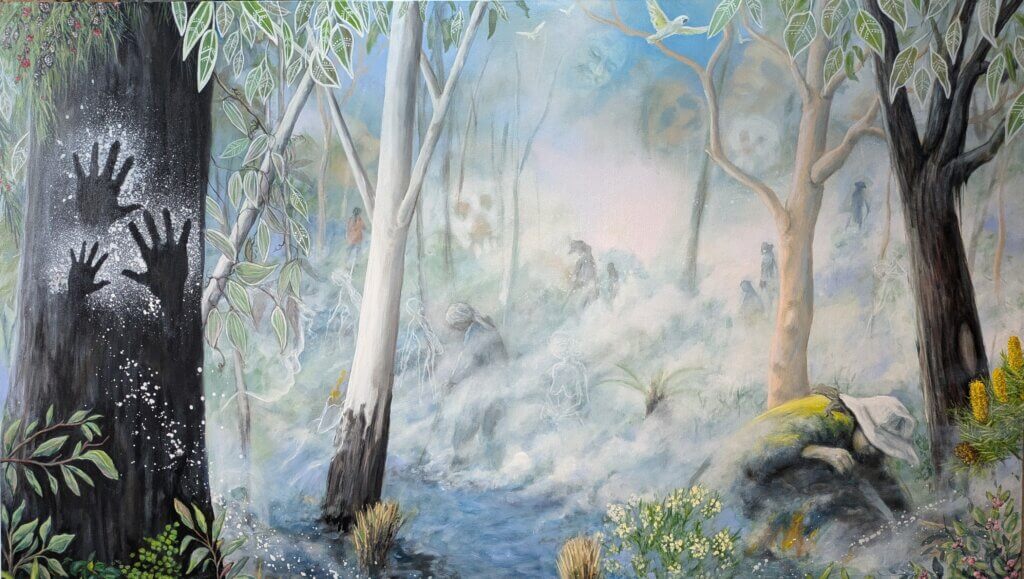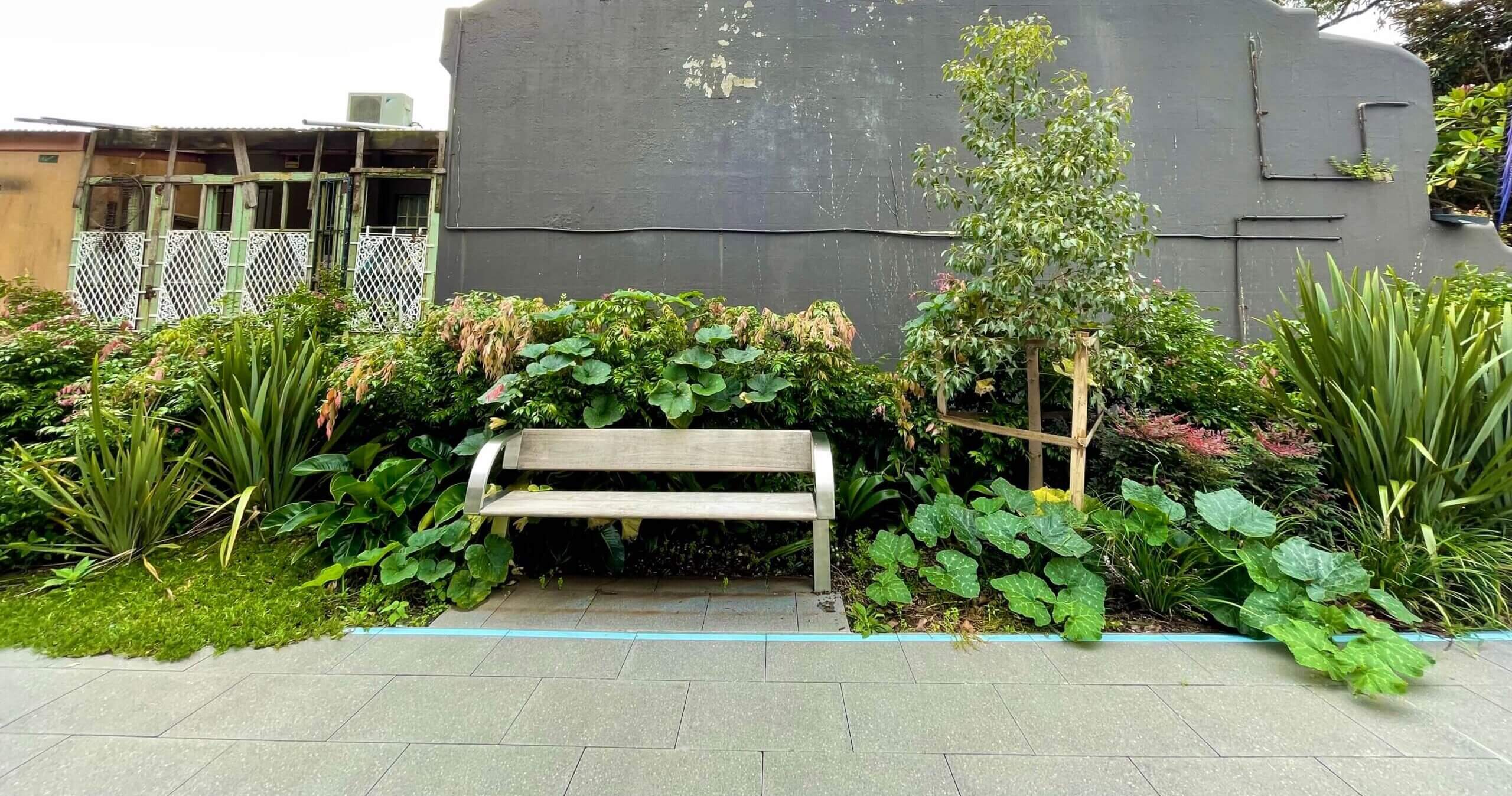
Mapping civic ecologies in Sydney's Green Square
By Alexandra Crosby and Ilaria Vanni of Mapping Edges
On a Saturday afternoon, a group of neighbours gathers at a small community garden in an inner suburb of Sydney. They call themselves the Green Square Growers, and their garden is a practical mix of raised beds filled with vegetables and herbs. Kale, tomatoes, and basil grow side by side, offering fresh produce to anyone who needs it.
The group gets to work, chatting as they pull weeds, trim branches, and collect seeds for future planting. The tasks are straightforward—digging, planting, and harvesting—but they provide a chance to catch up on the week’s events and share news. The scent of the garden—earthy and herbal—fills the air as they work.
The Green Square Growers welcome anyone who wants to join. Two teenagers walking a dog stop to ask questions, and a grandmother visiting her grandchildren from Indonesia sits nearby, watching with interest. People passing by often pause to read the sign on a garden bed, which invites them to take part or pick a few herbs.
There’s no formal membership or strict schedule at this garden. Anyone is welcome to plant, water, or harvest whenever they like. The garden is as much about building community as it is about growing food.
As the afternoon wraps up, the group shares out the harvest— a few tomatoes, some parsley—before heading off. The garden, now tended and ready, waits to welcome the next visitors. In this corner of Green Square, the garden isn’t just a place to grow food; it’s where community grows, too.
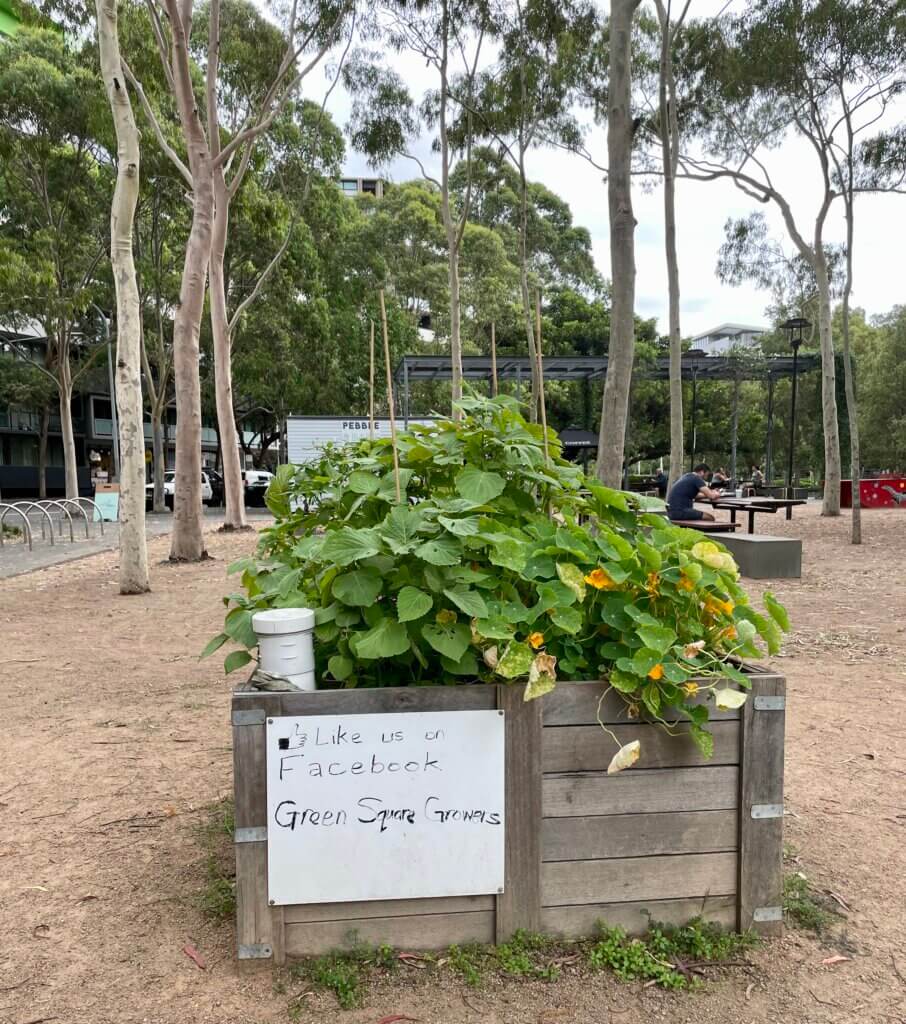
The Green Square Atlas of Civic Ecologies maps the civic environmental practices happening within Sydney’s Green Square precinct. It engages with public space and the edges between public and private space, for example verges and community gardens.
Green Square
Located halfway between Sydney’s CBD and its airport, Green Square is one of Australia’s biggest urban renewal projects. Many Sydney siders think of it as a construction site because it has been under ‘renewal’ for several decades. It’s a disrupted place punctuated by huge pits in the ground, roadworks, scaffoldings, barriers and cranes.
First Nations people know it by another name: nadunga gurad, or sand dune Country.
For millenia, the area has been known for its nattai bamalmarray: freshwater wetlands and seasonal ponds. This Country has always been an important refuge along the Songline routes that connect War'ran (Sydney Cove) to Gamay (Botany Bay).
Civic Ecologies and Public Space
Civic ecologies are stewardship activities that combine care for the environment and care for place, coined by Krasny and Tidball (2012, 2015a, 2015b) as a framework to understand the interactions of people, nature, organisations and policies in a given place.
They are important initiatives to make place from below, especially in urban renewal sites, where globally circulating trends in Placemaking can homogenize the landscape.

Photos: Laneways at Green Square, courtesy of Mapping Edges
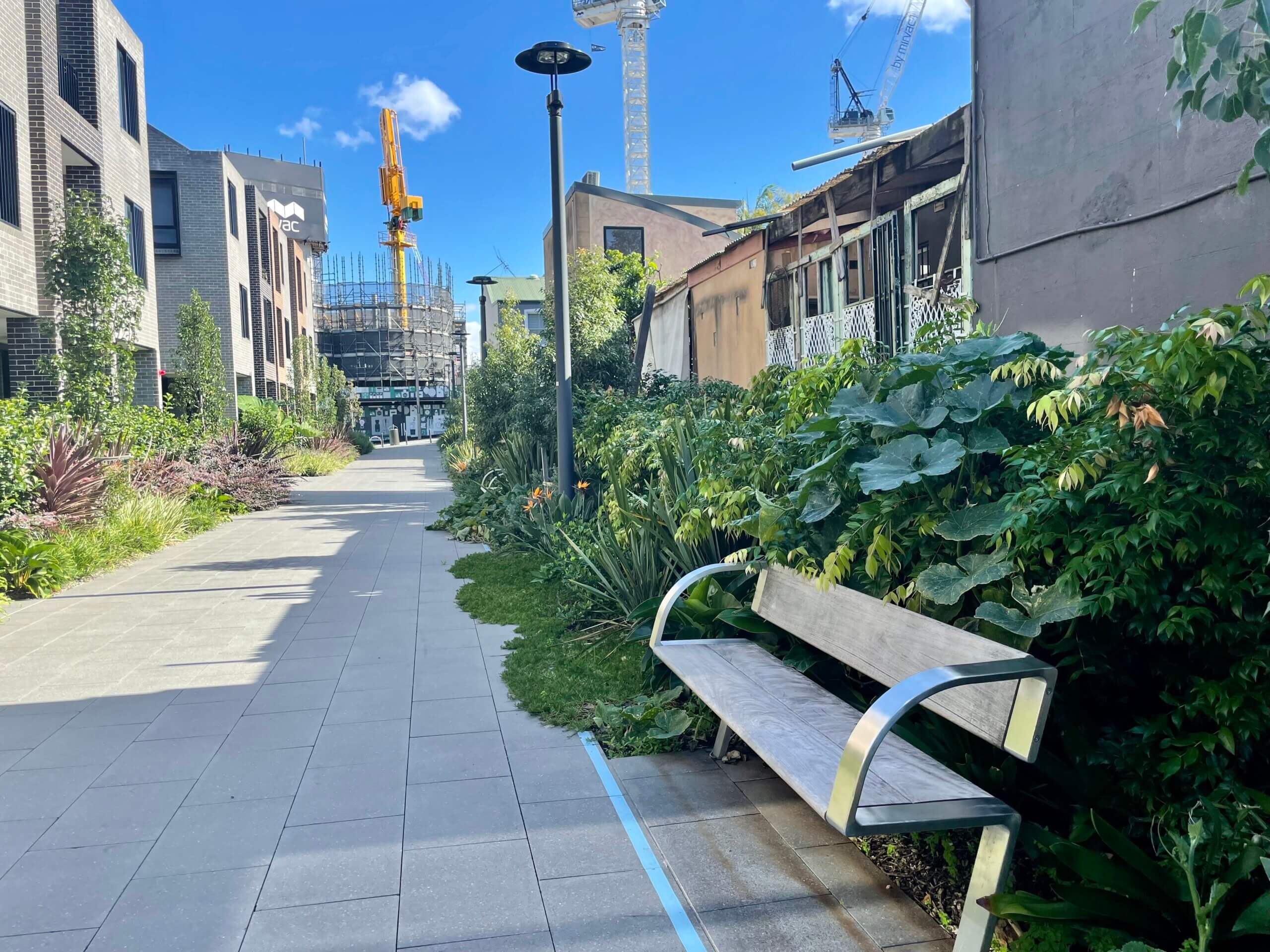
According to Krasny and Tidball civic ecology emerges in places that have undergone or are undergoing disruptive change, such as redevelopment, out of a love for nature and attachment to place that leads to stewardship practices. These practices bring together social, cultural and environmental factors, and in so doing create communities.
Civic ecology draws on human and more-than-human memories (such as for instance the ‘biological memories’ – ‘the seeds, the wildlife, and the ecological processes that are maintained in an ecosystem and that determine its future possibilities’ 2015 p. 7) to regenerate place. Civic ecological practices also produce ecosystem services, foster wellbeing and opportunities for learning, and establish networks with organisations and government bodies (2015 pp. 7-10). Finally, to think about these practices from an ecological perspective means to understand how they are part of cycles of renewal and destruction and investigate the role of policy makers in cultivating civic ecologies.
In our research we found that civic ecologies often blur definitions of private and public space.
- Materially, they create commons such as community gardens or cultivated verges and move gardening from home front and backyards into the streets, parks, and undeveloped sites.
- Politically, they influence local policies towards different uses of public space.
- Geographically civic ecologies complicate ideas of what is urban green space, adding diversity to established categories such as parks, reserves, green corridors, and nature strips.
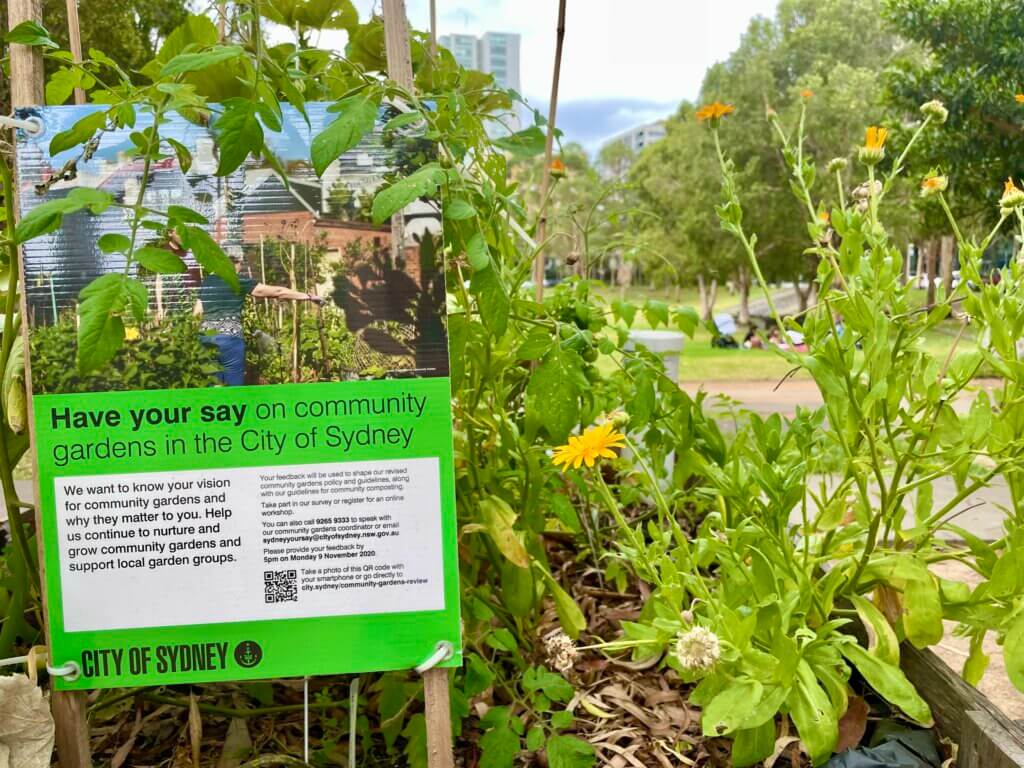
In Australian cities local councils, in this case the City of Sydney, have responded to civic ecology practices with supporting policies, and create forms of stewardship as part of their implementation plans, like bush regeneration, verge and community gardens, and an educational city farm. As a consequence, environmental stewardship practices such as gardening or caring for trees on the streets’ shoulder, are already part of local cultural practices and connect to urban planning strategies. In other words, grass root practices and local government work have several overlaps. Drawing from this, in our projects we foreground the role gardening, gardens and plants play in the definition of localised civic ecology practices and we also explore the amplification of these through local government.
The Atlas of Green Square Civic Ecologies
The Green Square Atlas of Civic Ecologies is a small, free book sharing stories of environmental stewards, along with simple tips to green and nourish your neighbourhood no matter where you live.
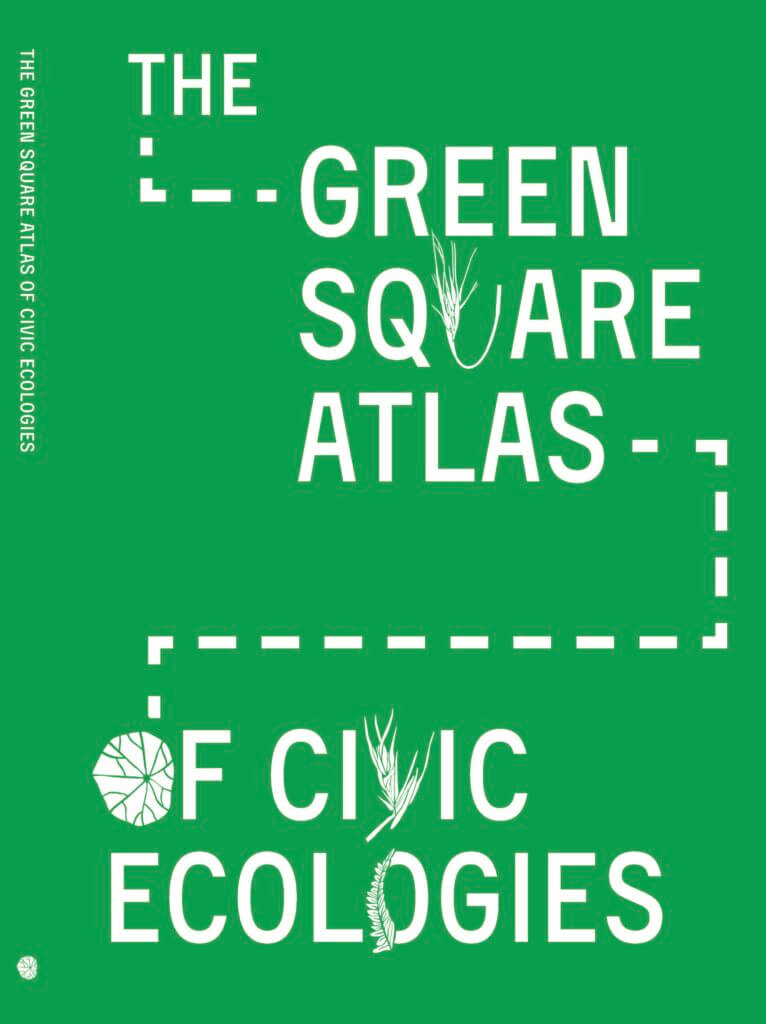
Frontyard Projects. Sydney, Australia
The Atlas captures and maps the stories of 11 civic ecologies champions who live and work in Sydney’s Green Square Precinct, one of Australia’s biggest urban renewal projects. These champions – verge and community gardeners, honey producers and artists, among others – describe how their environmental activities shape their local neighbourhoods, and foster stronger relationships within the community.
The stories are supplemented by simple suggestions to help environmentally minded Sydney residents to kickstart their own civic ecological practices, from seed saving and foraging to creating habitats for urban wildlife, no matter where they live. The atlas also includes suggestions and directions for inhabitants of Green Square to get to know the stunning and often surprising ecologies that are hidden in and around the precinct’s streets.
As well as providing a snapshot of environmental stewardship at the local level, the Green Square Atlas of Civic Ecologies is a tool to help readers reconnect with the world using all their senses ‘in order to re-orient, navigate and take action as political bodies in an ecological crisis.’
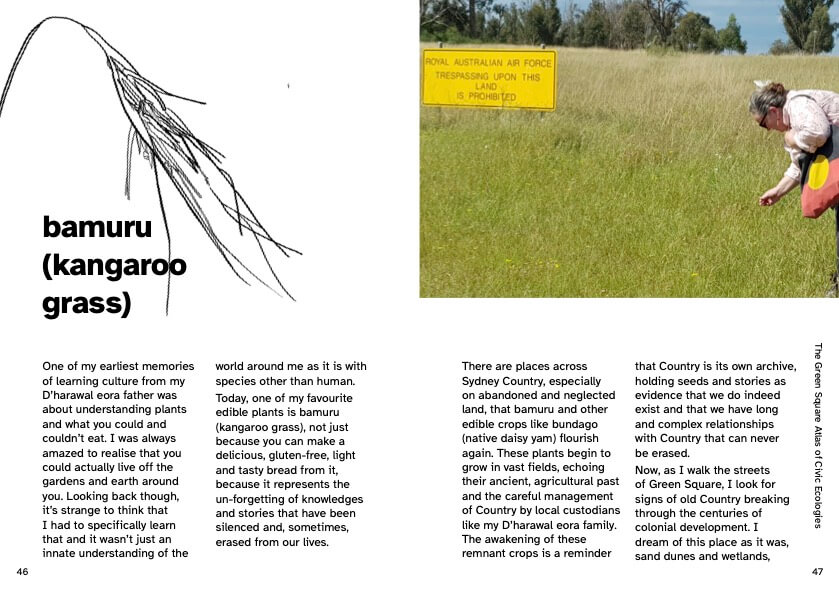
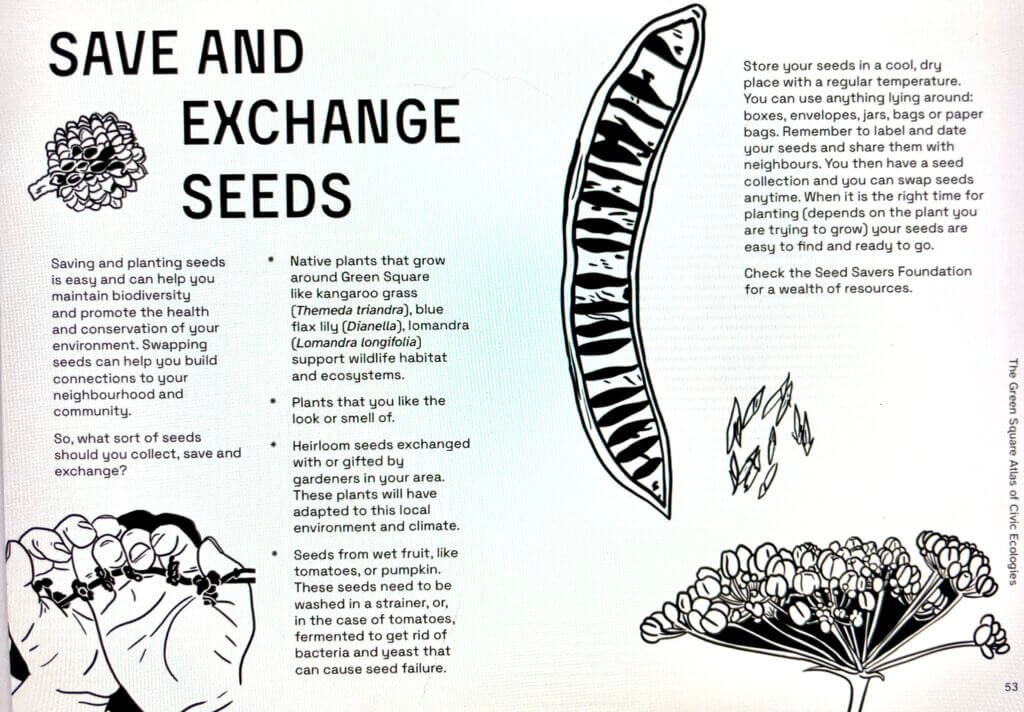
Place-based design research
The Atlas is part of our ongoing place-based design research (PBDR) as the studio Mapping Edges. We created a place-based ethnographic methodology which we can use in different neighbourhoods, and to make connections between neighbourhoods. This was the approach we used to make for the Atlas.
PBDR is an excellent way to engage with public space because it means you can be responsive to the ecological and cultural specificities of where you are. You can read more about our methodology here.
Whether you are a planner, a designer, an architect, or a researcher, this methodology can help avoid homogenising and solution-focused outcomes in diverse neighbourhoods of the city.
The Atlas is delivered in partnership with the 107 Projects Green Square, with funding from the City of Sydney.
Crosby, A., Vanni Accarigi, I., Foster, S., & Cutler, E. (2022). The Green Square Atlas of Civic Ecologies.
Krasny, M. E., & Tidball, K. G. (2015). Civic ecology: Adaptation and transformation from the ground up. MIT Press.
Krasny, M. E., & Tidball, K. G. (2012). Civic ecology: a pathway for Earth Stewardship in cities. Frontiers in Ecology and the Environment, 10(5), 267-273.
Vanni, I., & Crosby, A. (2023). Place-based methodologies for design research: An ethnographic approach. Design Studies, 85, 101168.
Vanni, I., & Crosby, A. (2023). Edge. Environmental Humanities, 15 (1), 164-167.

